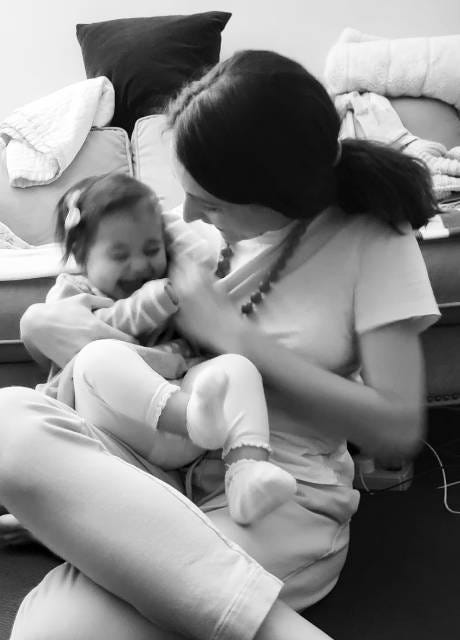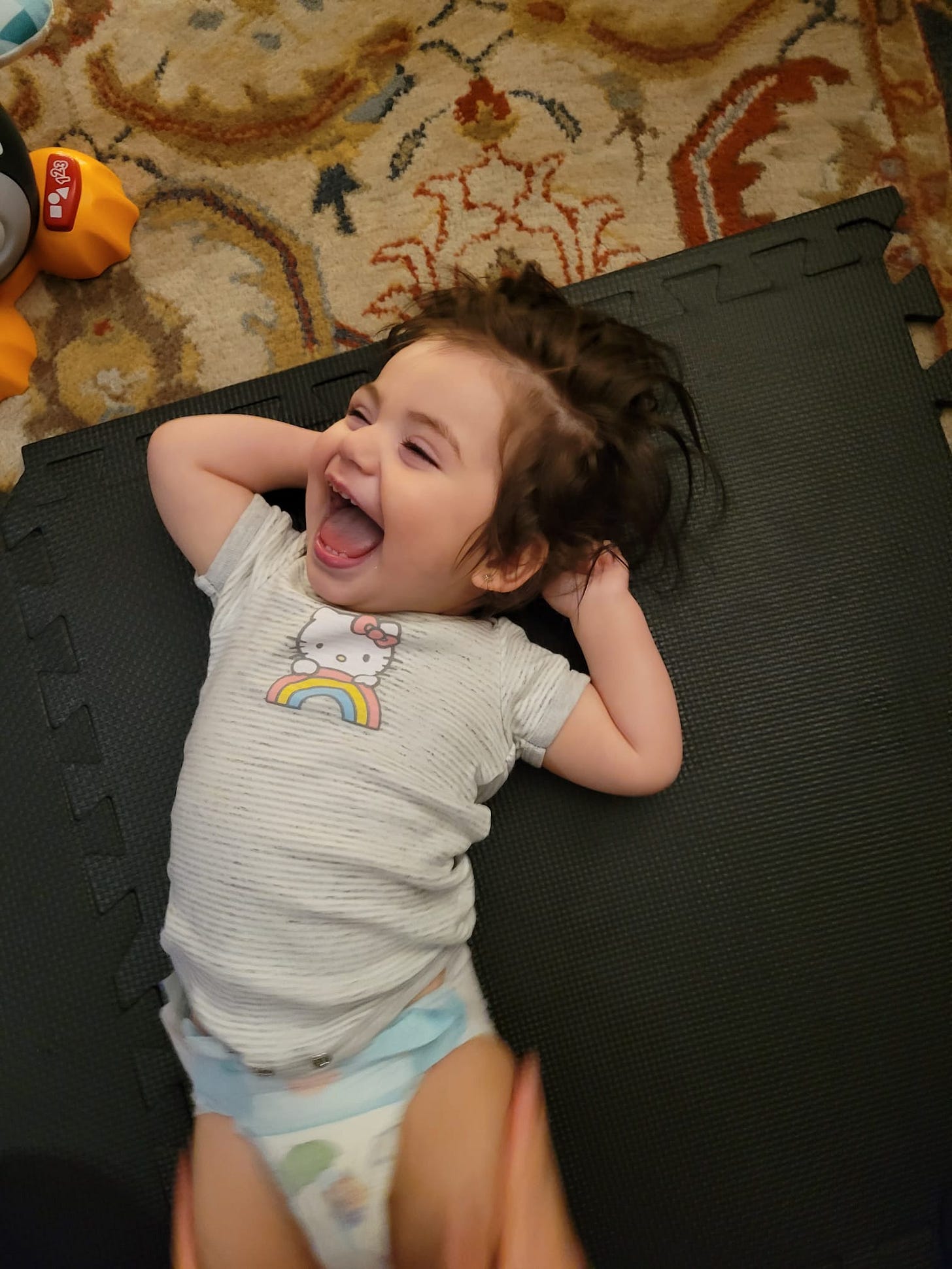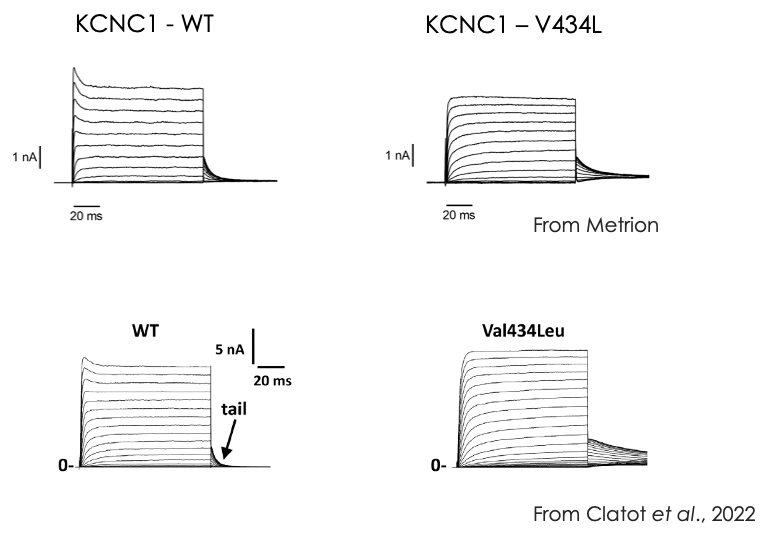KCNC1 Cure Odyssey
What happens when your child's variant is new to medicine? A genetic counselor from Toronto is leading a cure-focused community and has made key investments in drug repurposing and a mouse model.
In collaboration with
Stephanie Telesca and Chris España are like all the parents Perlara works with: thrust into community building, fundraising and scientific leadership roles that they never sought out, and racing towards treatments and cures for kiddos like Eliana for whom they imagined very different lives than being a medical pioneer.
If parents like them cry or complain, they do it in private. Outwardly, they embody the patients are the platform thesis that Perlara is all in on. If your disease is already ultra-rare — in the Telesca family’s case, a developmental epileptic encephalopathy (DEE) caused by a de novo variant in a potassium ion channel — and your child has a rarer still “likely pathogenic” variant of unknown significance, it feels as though the universe has abandoned you.
In this new era of 1-to-N medicine, one family may embark on its own but is soon joined by other pioneer families who also go deep on the science and don’t take no for an answer. Pioneer families not only seek out second and third opinions, but also form their own opinions.
To be clear, the 1-to-N equation requires equally pioneering physician scientists who are willing to initiate single-patient studies in the absence of a validated clinical protocol or biomarker. In fact, those pioneering physician scientists understand that single-patient studies are living laboratories, opportunities for hypothesis testing and unbiased discovery.
Eliana was diagnosed at 9 months. She has significant hypotonia, cortical visual impairment, vertical nystagmus and global developmental delays. C3/Cz sharp waveform during sleep is a potential EEG biomarker. However, she has not had seizures to date. Curiously, another child with the same variant as Eliana’s has nystagmus and cortical visual impairment, with seizures onsetting around 1 year old.
Perlara and the KCNC1 Foundation began working together in April 2022. In the first Statement of Work, Perlara Cure Guide Dr Van Duesterberg crafted a lean Cure Roadmap focused on elucidating the functional consequences of Eliana’s V434L variant. Despite the absence of early seizures, we presumed V434L to be loss-of-function for several reasons.
Most KCNC1/Kv3.1 variants characterized to date — R320H, R317H, Q339X, A421V, Q492X, A513V — impart loss of channel function, including the well-studied R320H variant which results in decreased conductance and has a dominant-negative effect on tetrameric Kv3.1-containing channels.
A protein sequence alignment between KCNC1 and the closely related gene (aka paralog) KCNC2 reveals that KCNC1 V434 is equivalent to KCNC2 V469. Remarkably, a V469L variant was found in another patient with developmental epileptic encephalopathy. Electrophysiological experiments showed that V469L narrows the channel pore size and results in lower peak current, i.e., less ion flow.
Case closed, right? By extension KCNC1 V434L should be loss-of-function, too. Turns out, not so simple.
In a stunning but not unusual example of how ion channel biology is devilishly complex, another KCNC2 variant two doors down from V469L is V471L. It actually results in a gain of channel function.
In the world of channelopathies, the only way to know for sure what a variant does is to measure its effect on channel function. Independent replication of original academic results by a contract research organization (CRO) is de rigueur.
At the end of 2022, Clatot et al describes three KCNC1 variants localized to the S6 pore region of the Kv3.1 channel, between the selectivity filter and PXP motif important for channel gating: M430I, V432M, and V434L (Eliana’s variant). Whether expressed alone or co-expressed equally with wildtype channel, Eliana’s V434L variant results in a clear gain-of-function (GoF).
In fact, all three variants show a prominent leftward (hyper-polarized) shift in the voltage dependence of activation and slowed deactivation.
Channelopathy conundrum ostensibly solved. V434L causes a gain of channel function, which is predicted to exert a loss of function on the excitability of Kv3-expressing high frequency-firing neurons.
KCNC1 Foundation is pursuing drug repurposing and disease modeling in parallel. At this juncture, base editing in the brain is still a far-off frontier.
Invertebrate models are less well-suited for mechanistic investigation of Kv3 channels because of their very different electrophysiological properties, namely they activate very slowly and at more negative potentials. A fly V434L avatar is being developed in the lab of Perlara Cure Guide Dr Jerome Korzelius. We’ll have more to say on its relevance in a few months.
In parallel, we have much more confidence in a V434L mouse avatar that is being developed by the Center for Precision Animal Modeling (C-PAM) at UAB. Prof Len Kaczmarek, an expert in KCNC1, told us he would “astonished” if a V434L mouse doesn’t have a phenotype. Potential phenotypes we might see in a V434L mouse include: auditory processing deficits, subclinical seizures, low muscle tone, and vision impairment.
Ion channels are ripe targets pharmacological inhibitors (and activators). Perlara Cure Guide Dr Whitney Dolan joined the team last summer to carry out a sweep of CROs with expertise in high-throughput drug screens and electrophysiology readouts. There was one clear winner: Metrion Biosciences.
Our first objective was to replicate the results of Clatot et al using manual patch-clamping experiments and biophysical characterization of expressed WT and V434L Kv3.1 channels in transiently transfected CHO cells.
As shown in the comparisons below, independent replication was achieved!
Clatot et al reported a resting membrane potential for V434L channels of -83.4 ± 2.6, while Metrion’s measurement is -64.9 ± 3.8.
Finally, non-transfected cells did not express any current confirming that the currents recorded from transfected cells were mediated by human KCNC1-WT and KCNC1-V434L channels.
At the moment Metrion is generating a stably transfected V434L CHO line for use in a 5,000+ compound drug repurposing screen. More assay development is in store next, followed by testing of a handful of known or suspected Kv3 channel inhibitors. According to the project Gantt chart, we’ll have more to say in a few months.













